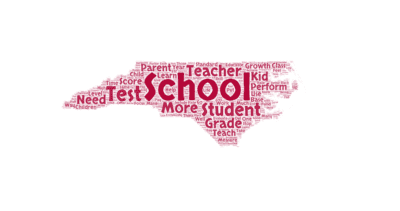
|
|
Superintendent Catherine Truitt has a post-it note on her computer that says, “Is it still worth doing?”
The work to reform the school performance grades, she said, is so important because what gets measured gets done, and what we measure needs to be indicative of school quality and student success.
It is no secret that state leaders think it is time to reconsider the accountability model used to give schools performance grades across North Carolina.
In the fall, the N.C. Department of Public Instruction (DPI) convened a working group to begin to redesign the model, and Tuesday was the final meeting of the group.
Next steps first
Ahead of the meeting, House Bill 26 — the Education Omnibus B,ill — was filed on Jan. 26, 2023. Part IV of the bill would require the state superintendent to study school achievement, growth, achievement scores, and grades, as well as school performance indicators for compliance with federal law and report back to the legislature by April 15, 2023.
Then by Feb. 15, 2024, DPI would be required to report to the Joint Legislative Education Oversight Committee on suggested changes to the school evaluation model. That proposed legislation gives you a sense of the possible timeline.
Michael Maher, deputy state superintendent, pointed to the legislation as evidence that the work of the working group has not just been an academic exercise.
“It takes time to get people on board,” said Rep. Ashton Clemmons, D-Guiford. “This lays the groundwork.”
The timeline would allow DPI to partner with superintendents across the state to test different models.
Maher will present at the N.C. State Board of Education this week. You can see his presentation here.
A review and discussion of indicators and weighting
There was literally a drumroll as Maher began to role out the indicators and possible changes in the weighting.
Currently, the school grades are based on each school’s achievement score (weighted 80%) and each school’s students’ academic growth (weighted 20%), according to the state’s 2021-22 accountability framework.
In addition to the survey by EdNC, stakeholder engagment in the working group process included the following:

Eight indicators — broken into academic indicators and school quality indicators — made the short list. For each indicator, it is important to note whether it would apply to elementary, middle, and/or high schools; whether it is required or could be a district or school choice; whether an exiting data system tracks the indicator; and whether it would be included in a state and/or federal model.
Here are the definitions of the four academic indicators:
- High school graduation rate: the percentage of students who graduate within five years (adjusted cohort graduation rate).
- Improving student group performance: increase in student group achievement from previous year.
- Employed, enlisted, enrolled: number of graduating students who enlist, enroll, or are employed.
- Postsecondary preparation inputs: elementary school | number of students participating in career exploration opportunities; middle school | number of students completing career development plans; high school | number of student who earn at least on credit in AP, IB, CIE, CCP, Honors Courses, as well as work-based learning.
Here are the definitions of the four school quality indicators:
- Extra/intra curricular activities: the percentage of students who participate in extracurricular or intra-curricular activities.
- Durable skills: identified qualities cited in Portrait of a Graduate.
- Chronic student absenteeism: the percentage of student whose absences exceed 10% of days in membership.
- School climate: outcomes of student, parent, and teacher surveys of parent engagement and satisfaction, teacher effectiveness, and school safety, environment, and cleanliness.
Tammy Howard, senior director of accountability and testing at DPI, is at the very beginning of modeling the eight indicators and looking at different possible weightings.
What resonates and initial concerns
Frank Barnes, chief equity officer at Charlotte-Mecklenburg Schools, posed three questions: What are our values, what can schools deliver on, and what can be validly and reliably measured?
The working group broke into small groups. There will be ongoing discussion about:
- Whether there should be one model that complies with federal regulations or two models: one for the federal regulations and a state model that would allow for more choice.
- Whether the list of indicators for high schools should be narrowed.
- Whether there needs to be a designation of low performing schools or whether the federal designations for comprehensive support and improvement (CSI) could serve that purpose.
- Whether there could be multiple letter grades.
- The ongoing need for assessment reform as well.
Small groups used this EdNC tool to see and reflect on the impact of different weightings.
They discussed the core principles of the work, how the work can be shared with education stakeholders, and the support DPI needs to provide to support advocacy efforts.
“There is widespread belief that what is in place does not work,” said Jeremy Gibbs, DPI’s regional director in western North Carolina. The hope is that a new model will more accurately reflect what is happening within the classroom and school walls.





